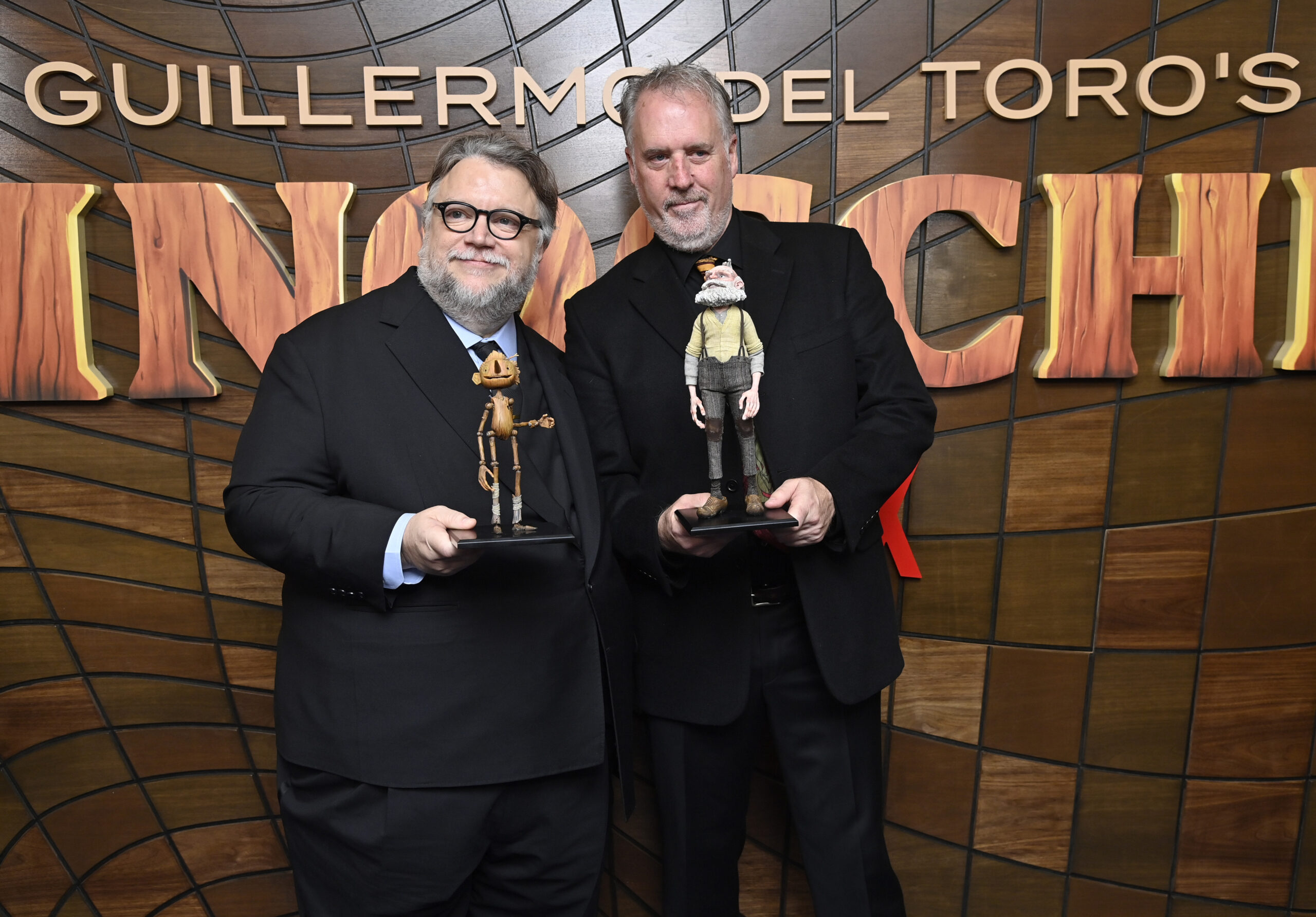
Filmmakers Guillermo del Toro and Mark Gustafson spoke about Guillermo del Toro’s Pinocchio during a roundtable interview.
My full thoughts on the film are still forthcoming but one thing that stood out to me in this approach to the story was changing the Pleasure Island sequence to a re-education youth camp. If you’ve seen any of Disney Pinocchio movies, you already know how nightmarish the sequences can be. There are no donkeys in this film even though there’s a similar sequence in this film.
An informal conversation got underway a few minutes early but recording didn’t start until most of the participants were in the room. The roundtable was a part of a special Netflix press day that was planned for Critics Choice Association members.
Audiences can catch Guillermo del Toro’s Pinocchio streaming on Netflix starting on December 9, 2022.
Speaking of the cricket, I know we were saying before we started recording, but thank you for not killing him off*—because there were so many funny scenes that I was laughing, especially at his pain.
Guillermo del Toro: So [direct that right?].
I have a question about the writing process. I went into the film without reading any press, without reading production notes, watching the trailer, anything. When I think of Pinocchio, I always think of those nightmare scenes with the boys turning into donkeys. What went into the decision process of not including those sequences?
Guillermo del Toro: They are there. The function of those sequences is to seduce the kids into something that looks fun, and then turn it into something horrible and the re-education youth camp is essentially that. It starts with paint and grenades, and they’re enjoying it, and doing sports. And there are funny songs playing in the loud speakers. And then they, instead of turning into donkeys, they gave gas masks, put on. And they go to war. And the turning moment is when you go from playing and planting a flag to him putting the real gun and saying, “Shoot the puppet.” So the function and dramaturgy is exactly the same as Pleasure Island.
And the decision was, when Mark and I were talking about that sequence, which is by the way the sequence that Pat McHale and I rewrote the most. The whole re-education camp. But like Pat McHale said to me, we were having one of our little arguments, and he said, “But I don’t think Pinocchio really understands why he’s there.” And I said, “Well, then, let Pinocchio say that.” And that started that conversation at night between the two kids. But the function is dramaturgically identical to Pleasure Island.
The difference is Pleasure Island is a moral warning that is pro-structure and against bad behavior and this is actually against the structure and pro making your own decisions and saying, “I can say no, Father. Can you?” So it leads to the exact opposite function, but by the same devices.
I really appreciated not having to see someone turning into a donkey.
Guillermo del Toro: Yeah, it was the scariest thing I ever saw.
* During an exclusive Critics Choice Association press conference for Guillermo del Toro’s Pinocchio, the filmmaker discussed killing off Sebastian J. Cricket early on in the film. What follows below is the portion of the press conference transcript in which they discuss Ewan McGregor voicing Sebastian J. Cricket.

Guillermo del Toro: I was thinking of another actor for that part, and the studio said, “Would you try Ewan?” And I said, “Well, let’s try him.” And immediately — I mean, he’s a great actor, but that was not the voice in Pat McHale or my head. And all of a sudden, they said, “Let’s try him. He’s a great actor. What’s the worst that can happen?” Well, the best that could happen is I think when we started hearing it, we said, “This is a whole new—” and I turned to Mark and I said, “Am I crazy or is the cricket now the star of the film?”
Mark Gustafson: Do you want me to answer that? [laughs]
Guillermo del Toro: Yes. Yes.
Mark Gustafson: No, it was great ’cause we actually wound up sort of expanding his role when we saw how charismatic the cricket could be. I mean, we had considered, you know, killing him early on, just, you know, getting rid of him. I know that’s not cool. [laughs]
Guillermo del Toro: Before Production [laughs]. And before Ewan. I know. No.
Mark Gustafson: Well, all right.
Guillermo del Toro: No. No. Let us say that we started saying, let’s put him in this scene and in that scene and in that scene. He was always on our radar, but Pat McHale and I were saying, “Should we kill him?” And we thought it could be great, and then we said, no. It’s actually beautiful if the cricket and Geppetto learn from Pinocchio, you know. And I think that was the end of that.
Mark Gustafson: Yeah. ’Cause really, if you look at the film, it’s kind of Geppetto’s story more than it is even Pinocchio’s story because he’s the one who has to – it’s not like he finds love. He recognizes it eventually. And that’s the arc that he’s on. He just doesn’t see it, to begin with.
Guillermo del Toro: You have Pinocchio learning to be a boy and all the other stories, and here is Geppetto learning to be a father. And that is far more valuable, I think. Yeah.
Netflix released Guillermo del Toro’s Pinocchio in theaters on November 9, 2022 and will launch the film December 9 on streaming.
Please subscribe to Solzy at the Movies on Substack.







